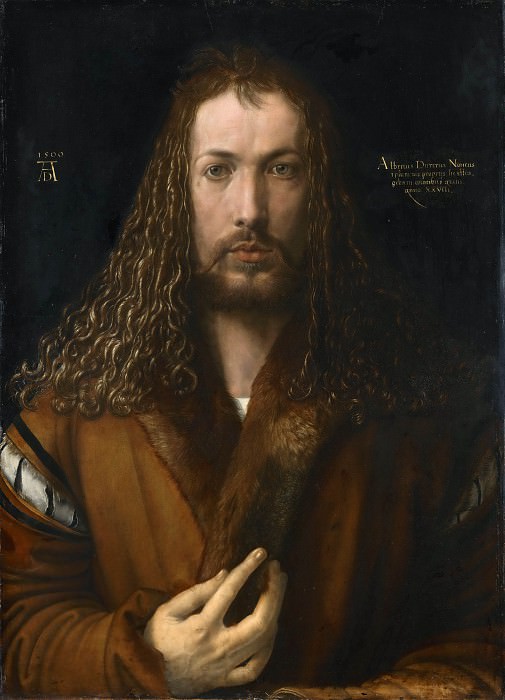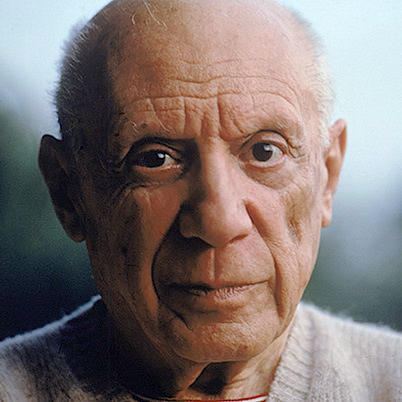El Lissitzky: Pioneer of Avant-Garde Art
El Lissitzky, a key figure in the Russian avant-garde movement, is widely recognized for his groundbreaking contributions to art, architecture, and design. His work, which spans various disciplines, is characterized by a unique fusion of Constructivism and Suprematism, two major art movements that emerged in Russia in the early 20th century. Lissitzky's innovative approach to art not only challenged traditional artistic conventions but also laid the foundation for future developments in graphic design and modern architecture.
The Suprematist Influence
Lissitzky was deeply influenced by Suprematism, a movement founded by Kazimir Malevich that emphasized the supremacy of pure artistic feeling over representation. Suprematism rejected the depiction of objects and instead focused on basic geometric forms such as squares, circles, and lines. Lissitzky embraced this abstract approach, creating compositions that were both visually striking and conceptually profound. His work during this period is characterized by a minimalist aesthetic that prioritizes form and color over narrative or symbolism.
One of Lissitzky's most famous works, "Proun," is a series of abstract compositions that he described as "the interchange station between painting and architecture." These works, which combine elements of painting, architecture, and graphic design, exemplify Lissitzky's belief in the transformative power of art. Through "Proun," Lissitzky sought to bridge the gap between two-dimensional and three-dimensional art, exploring new possibilities for spatial relationships and visual communication.
Architectural Vision and the Bauhaus Connection
Lissitzky's interest in architecture was a natural extension of his work in graphic design and painting. He believed that art and architecture were inextricably linked, and that both disciplines could be used to shape and influence society. Lissitzky's architectural designs reflect his commitment to the principles of Constructivism, a movement that advocated for the integration of art and industry.
In the early 1920s, Lissitzky became involved with the Bauhaus, a German art school that sought to unify art, craft, and technology. His collaboration with the Bauhaus further solidified his reputation as a leading figure in the avant-garde movement. Lissitzky's architectural projects, though many were never realized, were groundbreaking in their conceptual approach. He envisioned buildings that were not just functional structures but also dynamic spaces that could adapt to the needs of modern society.
Innovations in Graphic Design
Lissitzky's influence extends beyond painting and architecture; he is also considered one of the pioneers of modern graphic design. His work in this field is characterized by a bold use of typography, geometric shapes, and asymmetrical layouts. Lissitzky's designs often incorporated text and image in a way that challenged traditional notions of composition and communication.
One of Lissitzky's most iconic graphic design works is the 1923 poster "Beat the Whites with the Red Wedge." This politically charged piece, created during the Russian Civil War, uses simple geometric forms to convey a powerful message. The red wedge, symbolizing the Bolsheviks, pierces the white circle representing the anti-communist forces, creating a dynamic visual metaphor for the revolutionary struggle. This poster is a prime example of Lissitzky's ability to convey complex ideas through minimalistic design.
Lissitzky's contributions to graphic design also include his work on book covers, magazines, and exhibition catalogs. His designs were not just visually striking but also conceptually innovative, often incorporating elements of Suprematism and Constructivism. Lissitzky's work in this field laid the groundwork for future developments in modernist design, influencing generations of designers and artists.
Exhibition Design and Propaganda Art
In addition to his work in graphic design, Lissitzky was also a pioneer in exhibition design. He believed that exhibitions were not just a means of displaying art but also a powerful tool for communication and propaganda. Lissitzky's approach to exhibition design was highly innovative, incorporating elements of architecture, graphic design, and multimedia.
One of his most significant contributions to exhibition design was his work on the 1928 Pressa exhibition in Cologne, Germany. Lissitzky's design for the Soviet pavilion was a striking example of Constructivist architecture, featuring bold geometric forms and innovative use of materials. The pavilion's design was intended to convey the dynamism and progress of the Soviet Union, using architecture as a tool for political propaganda.
Lissitzky's work in exhibition design extended beyond architecture; he also experimented with multimedia installations and interactive displays. He believed that exhibitions should be immersive experiences that engaged the viewer on multiple levels. Lissitzky's innovative approach to exhibition design had a lasting impact on the field, influencing the development of modern museum and gallery practices.
Legacy and Influence
El Lissitzky's contributions to art, design, and architecture have had a profound and lasting impact on the development of modernism. His work challenged traditional artistic conventions, pushing the boundaries of what art could be and how it could function in society. Lissitzky's influence can be seen in the work of later artists and designers, particularly those associated with the Bauhaus and other modernist movements.
Lissitzky's legacy is not limited to his artistic innovations; he also played a key role in shaping the cultural and political landscape of his time. His work as a designer, architect, and propagandist was deeply intertwined with his commitment to the ideals of the Russian Revolution and the construction of a new socialist society. Lissitzky believed that art had the power to transform society, and he dedicated his life to exploring the ways in which art could be used as a tool for social change.
Today, Lissitzky's work is celebrated for its visionary approach to art and design. His contributions to the fields of graphic design, architecture, and exhibition design continue to inspire and influence contemporary artists and designers. Lissitzky's work serves as a reminder of the transformative power of art, and his legacy continues to shape the way we think about the relationship between art, society, and technology.
El Lissitzky, a key figure in the Russian avant-garde movement, is widely recognized for his groundbreaking contributions to art, architecture, and design. His work, which spans various disciplines, is characterized by a unique fusion of Constructivism and Suprematism, two major art movements that emerged in Russia in the early 20th century. Lissitzky's innovative approach to art not only challenged traditional artistic conventions but also laid the foundation for future developments in graphic design and modern architecture.
The Suprematist Influence
Lissitzky was deeply influenced by Suprematism, a movement founded by Kazimir Malevich that emphasized the supremacy of pure artistic feeling over representation. Suprematism rejected the depiction of objects and instead focused on basic geometric forms such as squares, circles, and lines. Lissitzky embraced this abstract approach, creating compositions that were both visually striking and conceptually profound. His work during this period is characterized by a minimalist aesthetic that prioritizes form and color over narrative or symbolism.
One of Lissitzky's most famous works, "Proun," is a series of abstract compositions that he described as "the interchange station between painting and architecture." These works, which combine elements of painting, architecture, and graphic design, exemplify Lissitzky's belief in the transformative power of art. Through "Proun," Lissitzky sought to bridge the gap between two-dimensional and three-dimensional art, exploring new possibilities for spatial relationships and visual communication.
Architectural Vision and the Bauhaus Connection
Lissitzky's interest in architecture was a natural extension of his work in graphic design and painting. He believed that art and architecture were inextricably linked, and that both disciplines could be used to shape and influence society. Lissitzky's architectural designs reflect his commitment to the principles of Constructivism, a movement that advocated for the integration of art and industry.
In the early 1920s, Lissitzky became involved with the Bauhaus, a German art school that sought to unify art, craft, and technology. His collaboration with the Bauhaus further solidified his reputation as a leading figure in the avant-garde movement. Lissitzky's architectural projects, though many were never realized, were groundbreaking in their conceptual approach. He envisioned buildings that were not just functional structures but also dynamic spaces that could adapt to the needs of modern society.
Innovations in Graphic Design
Lissitzky's influence extends beyond painting and architecture; he is also considered one of the pioneers of modern graphic design. His work in this field is characterized by a bold use of typography, geometric shapes, and asymmetrical layouts. Lissitzky's designs often incorporated text and image in a way that challenged traditional notions of composition and communication.
One of Lissitzky's most iconic graphic design works is the 1923 poster "Beat the Whites with the Red Wedge." This politically charged piece, created during the Russian Civil War, uses simple geometric forms to convey a powerful message. The red wedge, symbolizing the Bolsheviks, pierces the white circle representing the anti-communist forces, creating a dynamic visual metaphor for the revolutionary struggle. This poster is a prime example of Lissitzky's ability to convey complex ideas through minimalistic design.
Lissitzky's contributions to graphic design also include his work on book covers, magazines, and exhibition catalogs. His designs were not just visually striking but also conceptually innovative, often incorporating elements of Suprematism and Constructivism. Lissitzky's work in this field laid the groundwork for future developments in modernist design, influencing generations of designers and artists.
Exhibition Design and Propaganda Art
In addition to his work in graphic design, Lissitzky was also a pioneer in exhibition design. He believed that exhibitions were not just a means of displaying art but also a powerful tool for communication and propaganda. Lissitzky's approach to exhibition design was highly innovative, incorporating elements of architecture, graphic design, and multimedia.
One of his most significant contributions to exhibition design was his work on the 1928 Pressa exhibition in Cologne, Germany. Lissitzky's design for the Soviet pavilion was a striking example of Constructivist architecture, featuring bold geometric forms and innovative use of materials. The pavilion's design was intended to convey the dynamism and progress of the Soviet Union, using architecture as a tool for political propaganda.
Lissitzky's work in exhibition design extended beyond architecture; he also experimented with multimedia installations and interactive displays. He believed that exhibitions should be immersive experiences that engaged the viewer on multiple levels. Lissitzky's innovative approach to exhibition design had a lasting impact on the field, influencing the development of modern museum and gallery practices.
Legacy and Influence
El Lissitzky's contributions to art, design, and architecture have had a profound and lasting impact on the development of modernism. His work challenged traditional artistic conventions, pushing the boundaries of what art could be and how it could function in society. Lissitzky's influence can be seen in the work of later artists and designers, particularly those associated with the Bauhaus and other modernist movements.
Lissitzky's legacy is not limited to his artistic innovations; he also played a key role in shaping the cultural and political landscape of his time. His work as a designer, architect, and propagandist was deeply intertwined with his commitment to the ideals of the Russian Revolution and the construction of a new socialist society. Lissitzky believed that art had the power to transform society, and he dedicated his life to exploring the ways in which art could be used as a tool for social change.
Today, Lissitzky's work is celebrated for its visionary approach to art and design. His contributions to the fields of graphic design, architecture, and exhibition design continue to inspire and influence contemporary artists and designers. Lissitzky's work serves as a reminder of the transformative power of art, and his legacy continues to shape the way we think about the relationship between art, society, and technology.




